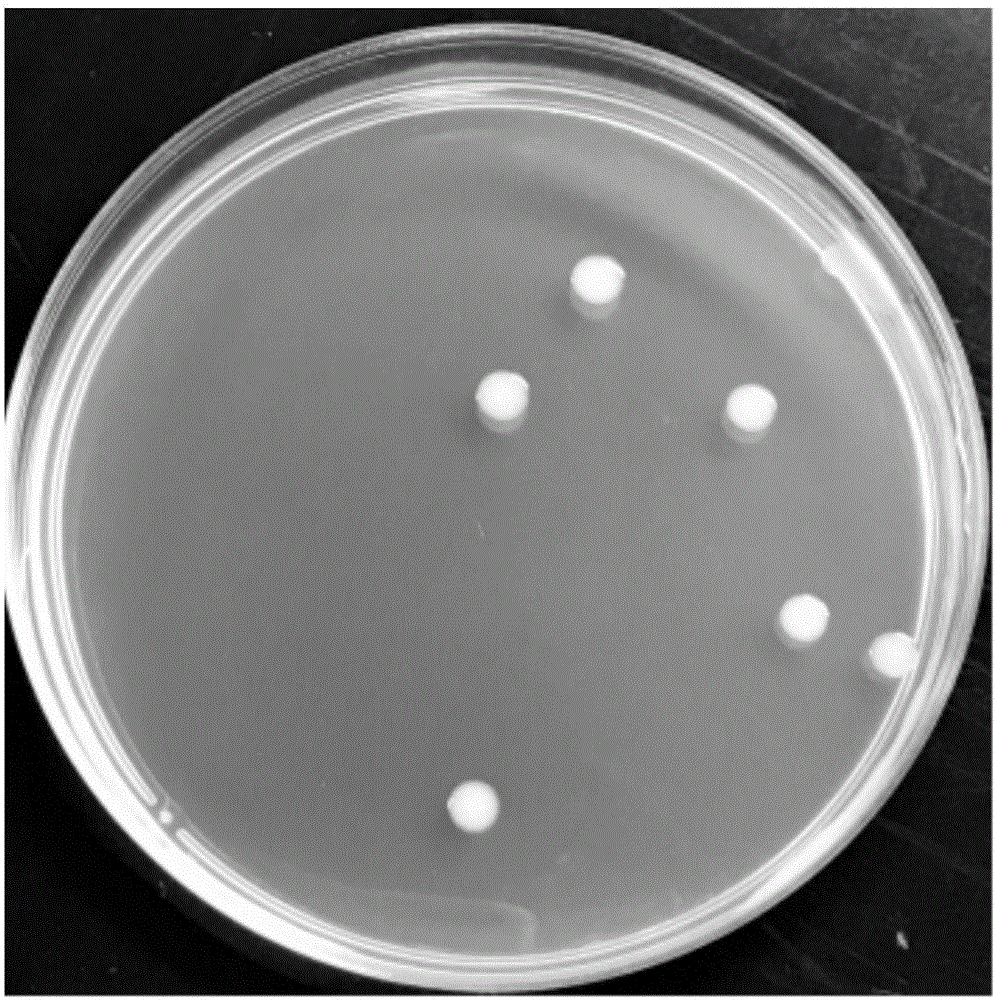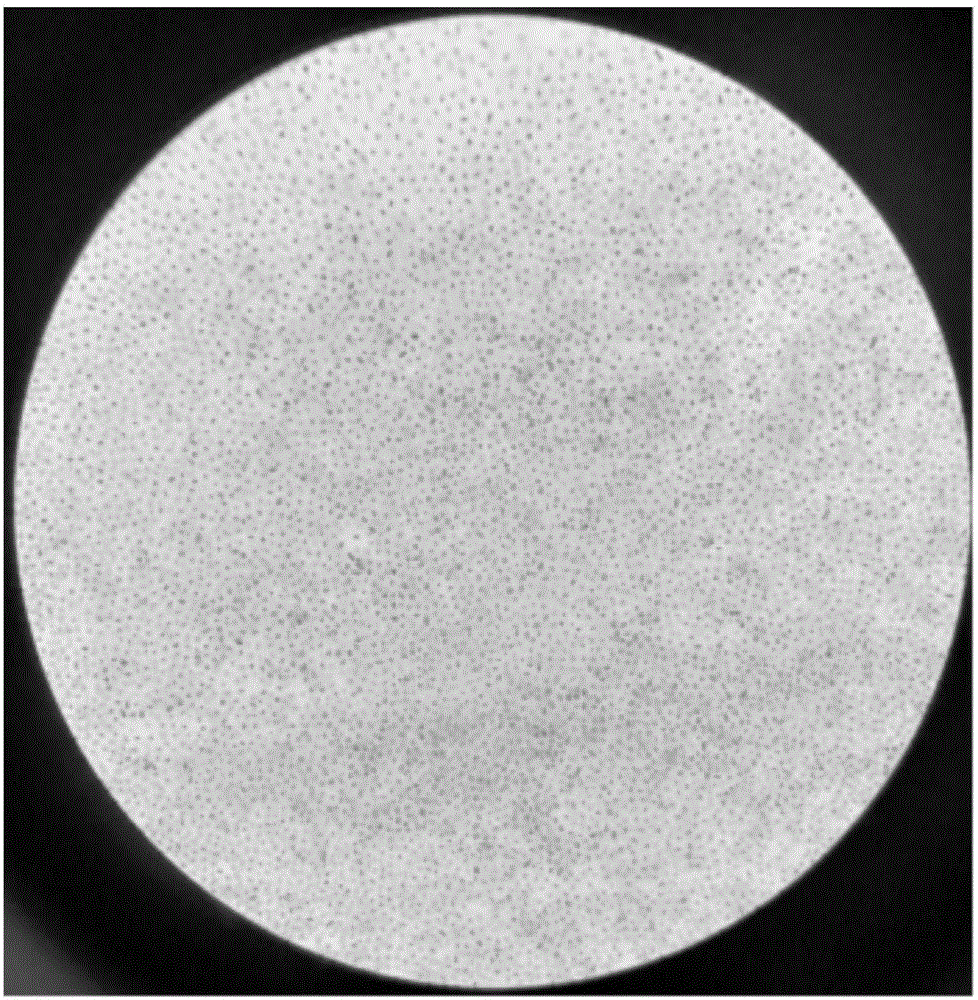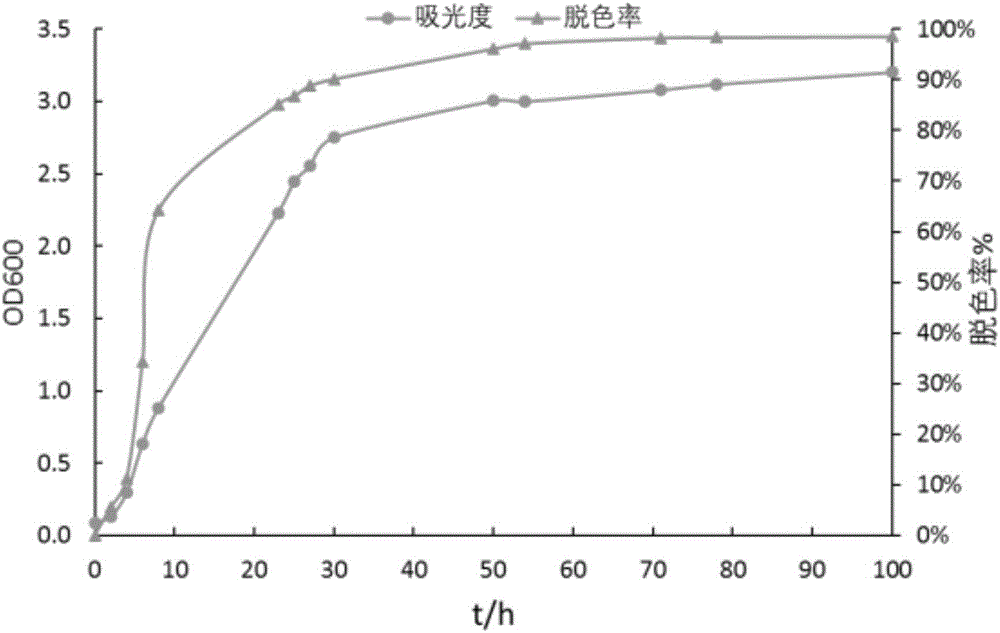Broadspectrum efficient Klebsiella pneumoniae KL1 for decoloring azo dyes and application of broadspectrum efficient Klebsiella pneumoniae KL1
A Klebsiella and azo decolorization technology, which is applied in the direction of bacteria, water pollutants, and microbial-based methods, can solve the problem of decolorization of sewage without azo dyes, the long time required for decolorization of azo dyes, and the treatment Harsh environmental requirements and other issues have achieved the effect of good market prospects, wide cultivation and adaptation conditions, and low cost
- Summary
- Abstract
- Description
- Claims
- Application Information
AI Technical Summary
Problems solved by technology
Method used
Image
Examples
Embodiment 1
[0029] Colony observation of Klebsiella pneumoniae strain KL1.
[0030] Take 10uL of the bacterial solution of Klebsiella pneumoniae strain KL1 in the logarithmic phase of growth, and dilute it with sterile water for 10 6 Finally, take 100uL of the diluted liquid and add it dropwise to the surface of the plate culture medium, spread it evenly with a sterilized applicator, under the conditions of 37°C and pH 5.6, let it stand at constant temperature for 1 to 3 days, and then observe the growth of the colony. Such as figure 1 shown.
[0031] Components of the above plate medium: potassium dihydrogen phosphate 2.66g / L, ammonium chloride 0.2g / L, anhydrous sodium sulfate 0.5g / L, yeast extract 3g / L, agar powder 15g / L, distilled water 1L.
[0032] The biological characteristics of Klebsiella pneumoniae strain KL1 are round colonies with rounded edges, smooth and slightly raised surface, relatively viscous, and milky white. Gram-negative bacteria were identified by Gram staining, ...
Embodiment 2
[0035] Enrichment culture of Klebsiella pneumoniae strain KL1.
[0036] Take the Klebsiella pneumoniae strain (Klebsiella pneumoniae) KL1 with an inoculation loop and transfer it to an Erlenmeyer flask (250 mL) containing 100 mL of liquid medium. Klebsiella strain KL1.
[0037] The above medium components are: Potassium dihydrogen phosphate 2.66g / L, ammonium chloride 0.2g / L, anhydrous sodium sulfate 0.5g / L, yeast extract 3g / L, distilled water 1L.
[0038] The above-mentioned culture medium, Erlenmeyer flask and other utensils were all sterilized at 121°C and 100kPa for 20 minutes.
Embodiment 3
[0040] Growth curve assay of Klebsiella pneumoniae strain KL1.
[0041]The bacterium solution of the Klebsiella pneumoniae strain KL1 (obtained by the conditional culture in Example 2) that has been cultured statically at a constant temperature for 24h is inoculated in the freshly sterilized medium with 1% (V / V), at regular intervals Take a small amount of bacterial liquid and measure its OD600 optical density value on a UV-visible spectrophotometer as a representative value of the bacterial content. After measuring for 100 hours, draw a growth curve according to the measurement time and the corresponding OD600 value. The results are as follows: image 3 shown. The growth characteristics of Klebsiella pneumoniae strain KL1 can be observed from the figure. KL1 is in the lag phase at 0-2 hours, in the logarithmic phase at 2-30 hours, and in the stable phase at 30-100 hours. The Klebsiella pneumoniae strain KL1 provided by the present invention has a shorter lag period, which is...
PUM
 Login to View More
Login to View More Abstract
Description
Claims
Application Information
 Login to View More
Login to View More - R&D
- Intellectual Property
- Life Sciences
- Materials
- Tech Scout
- Unparalleled Data Quality
- Higher Quality Content
- 60% Fewer Hallucinations
Browse by: Latest US Patents, China's latest patents, Technical Efficacy Thesaurus, Application Domain, Technology Topic, Popular Technical Reports.
© 2025 PatSnap. All rights reserved.Legal|Privacy policy|Modern Slavery Act Transparency Statement|Sitemap|About US| Contact US: help@patsnap.com



